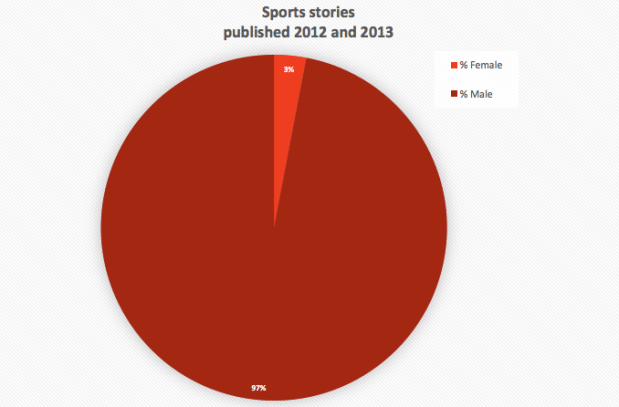Written by Paige Beresford
In the nineteenth century the central moral challenge was slavery. In the twentieth century it was the fight against totalitarianism. Now, in this century, it is widely believed that the paramount moral challenge will be the struggle for gender equality.
As a twenty-first century society we would like to believe that attitudes towards gender have progressed from where they were a few decades ago. We would like to believe that in this era women can do anything a man can and vice versa.
But the truth is there is still a great deal of work to be done.

Sports journalism is known for being a difficult area for women to enter. Although there are a handful of established female journalists such as Clare Balding, Erin Andrews and Jackie MacMullan there are plenty who haven’t managed to get their foot in door and it’s not for a lack of talent.
When I first started to get into sports writing I was warned that it wouldn’t be easy. Even now that I work in BBC Sport Scotland and have lost count of how many sports stories I’ve had published people still tell me I don’t know what I’m talking about or ask if I’m the person helping out rather than the person writing the story. This is especially the case when it comes to men’s football.
Although there has been considerable progress in the visibility of women in broadcast sports journalism, with journalists like Balding and Gabby Logan taking the role as starring presenters in the UK during the London Olympics, there are still few female sports writers and sports journalism as a whole remains largely male-dominated.
The latest Associated Press Sports Editors report card demonstrates just how true that statement is. Figures show that the percentage of women in top-level positions in sports media remains dismally low.

The 2014 report shows that 90% of the sports editors, 90% of the assistant sports editors, 88% of columnists, 87% of reporters and 81% of copy editors/designers were male.
It was also explained in the report that ESPN were the leader in hiring women in key positions. In fact, if the female ESPN sports editors were removed the percentage of sports editors across the industry that are male would increase to 97%.
Back in 2012 and 2013, The Guardian journalists Suzanne Franks and Deidre O’Neill took a look at bylines across UK newspapers and reported that, when it came to sports stories, at no point was the proportion of female bylines higher than 3%. In fact, they reported that the average proportion of stories over that period written by women was a mere 1.8%. They also said that “Alison Kervin’s appointment in 2013 at the Mail on Sunday as the first (and only) female sports editor of a UK national newspaper was a milestone. Around half of national newspaper sports desks have no women.”
Even today there are no women among the fifteen person strong BBC Sport’s correspondent team which covers eight different sports!

I’m sure it will come as no surprise to anyone to say that even those who have managed to get their foot in the door struggle to be taken seriously. Many of them are not treated well on social media and some receive abuse not because of what they write but because of who they are.
Aspiring female journalists could also be put off from pursuing a career in the industry by ridiculous stories like Top 30 Hottest Female Sports Reporters & Presenters and The Sexiest Female Sports Reporters of All Time.
Despite all of this more and more young women are applying for university courses on sports reporting and are encouraged to do so by university lecturers. Last decade a sports journalism class was dominated entirely by guys. Now for every 10 male students there is a female student.

A positive thing I’ve noticed from this is that if you are a woman who is good at writing about sport and about football then you are easily noticed. You stand out from the crowd. People notice when a girl’s name is attached to a good sports story. They notice when a woman’s analysis shows something new because facts are facts no matter who wrote them.
Not everyone is going to ignore you or say that your opinion is invalid because you’re not a man in a man’s industry.
If I could offer anything to women who want to get into sports writing it would be this; you have an opinion, so voice it. Write your story, share it, and make yourself heard. Find your voice, and when you do, fill the silence.

One thought on “An Unfair Playing Field: Gender Inequality In Sports Journalism”